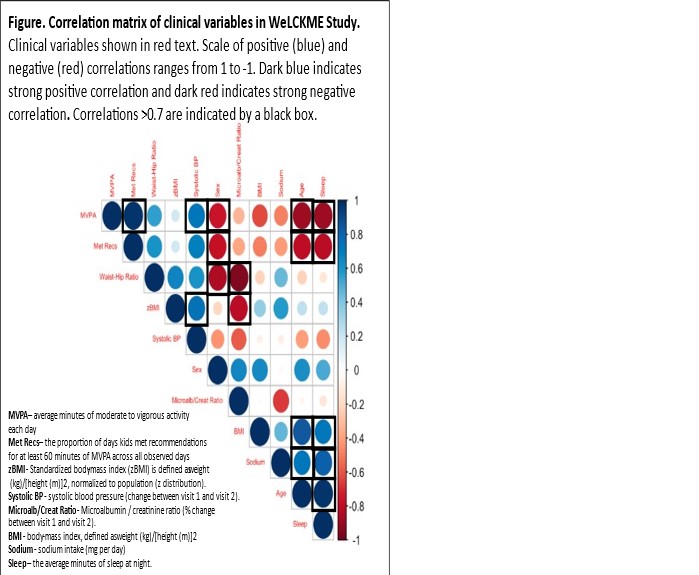Nephrology: Clinical
Nephrology 2: CAKUT/Genetic Clinical and Basic Science
262 - Effects of weight loss on systolic blood pressures and microalbumin excretion in obese children
Publication Number: 262.251
.jpg)
Joshua Benito, BS - Biochemisty (he/him/his)
Medical Student, M3
University of South Carolina School of Medicine Greenville
greenville, South Carolina, United States- SG
Sudha Garimella, MD (she/her/hers)
Associate Professor
University of South Carolina School of Medicine Greenville
USC SOM Greenville
Greenville, South Carolina, United States
Presenting Author(s)
Co-Author(s)
Background:
Obesity has a significant impact on kidney health. The impact of obesity on cardiovascular health and the development of chronic kidney disease (CKD) is difficult to assess clinically until hypertension or microalbuminuria become apparent. There is a need for early biomarkers of kidney injury in children with obesity. MicroRNAs in urinary vesicles can be easily obtained, are impacted by diet and exercise, and can be promising early biomarker candidates for CKD. The relative lack of comorbidities in children can help determine the effects of obesity on CKD. While data exists on the impact of weight loss on CKD in adults, there is lack of data showing effects of activity/diet change on blood pressure (BP), microalbumin (MA) and microRNA in children.
Objective: To determine the effects of weight loss on clinical and genetic markers of CKD in children
Design/Methods:
Weight Loss Changing Kidney MicroRNA Expression (WeLCKME) study recruited participants as they lost weight to see the change in kidney exosomal MicroRNA expression in urine. Children attending a pediatric clinic were recruited to the study if they met the following inclusion criteria: ages 4-18, BMI >85Th percentile and no known health problems. Families were required to attend two study visits three months apart. They were given a Fitbit Charge-2 to track activity and asked to complete ASA-24 dietary recall. They filled out questionnaires each week about diet and sleep/activity. First morning urine was collected for MA creatinine ratio. Second morning urine was collected for urinary microRNA Next Generation sequencing. Data were collected via RedCap/Qualtrics and analyzed using R.
Results: Out of 419 screened children; 200 met study criteria, 80 attended clinics, 60 spoke to recruiter, 37 agreed to participate, and 12 completed both visits. Average age was 11.1 years with equal number of male and female participants. At the end of the study period as compared to the first visit, 66% reported decreased sodium consumption, 50% had improved z BMI scores with 2/12 having z BMI < 1.64. Waist height ratio and waist hip ratio (WHR) improved in 30%. Genetic data analysis is ongoing. While none of them had elevated BP or MA ratio >30, correlation matrix shows trend toward increasing systolic BP with z BMI, WHR is correlated to change in MA and activity tends to change systolic BP (Fig1).
Conclusion(s): Our data suggests WHR may be correlated to MA excretion. Systolic blood pressure does change in normotensive obese children with increasing activity. Longitudinal studies are needed in a larger cohort to elucidate the effects of obesity on kidney health
